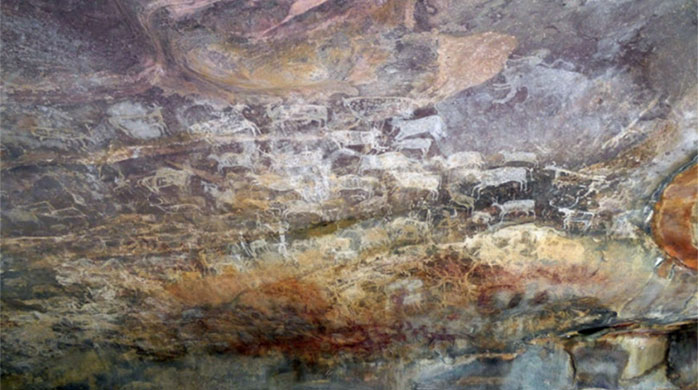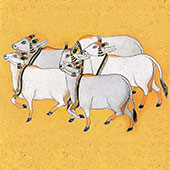The Bhimbetka cave paintings, often regarded as the oldest evidence of art in South Asia, are Prehistoric paintings discovered on the Bhimbetka rock shelters in the Raisen area of present-day Madhya Pradesh. Bhimbetka has about 750 rock shelters, many of which feature murals showing animal and human figures in green, red, white, brown, and black. The oldest of them depict scenes from the life of Upper Palaeolithic and Mesolithic hunter-gatherers - a time when many animals had yet to be tamed, people were nomadic, and collective civilizations did not yet exist. The caves were inhabited by humans from at least the Upper Paleolithic period (around 30,000 years ago) to the medieval period, and the rock art found in the caves provides a glimpse into the lives of the people who lived there. One of the common themes in the rock art of Bhimbetka is the depiction of cattle. These cattle are depicted in various poses, such as standing, grazing, and being milked. The depictions also show the different types of cattle, including humped and humpless breeds, and the use of various tools and equipment associated with cattle, such as ropes and milking vessels.

People hunting bovine.
(Image source)

Animals painted on the rock shelters, Upper Paleolithic period, Bhimbetka, India.
(Image source)

